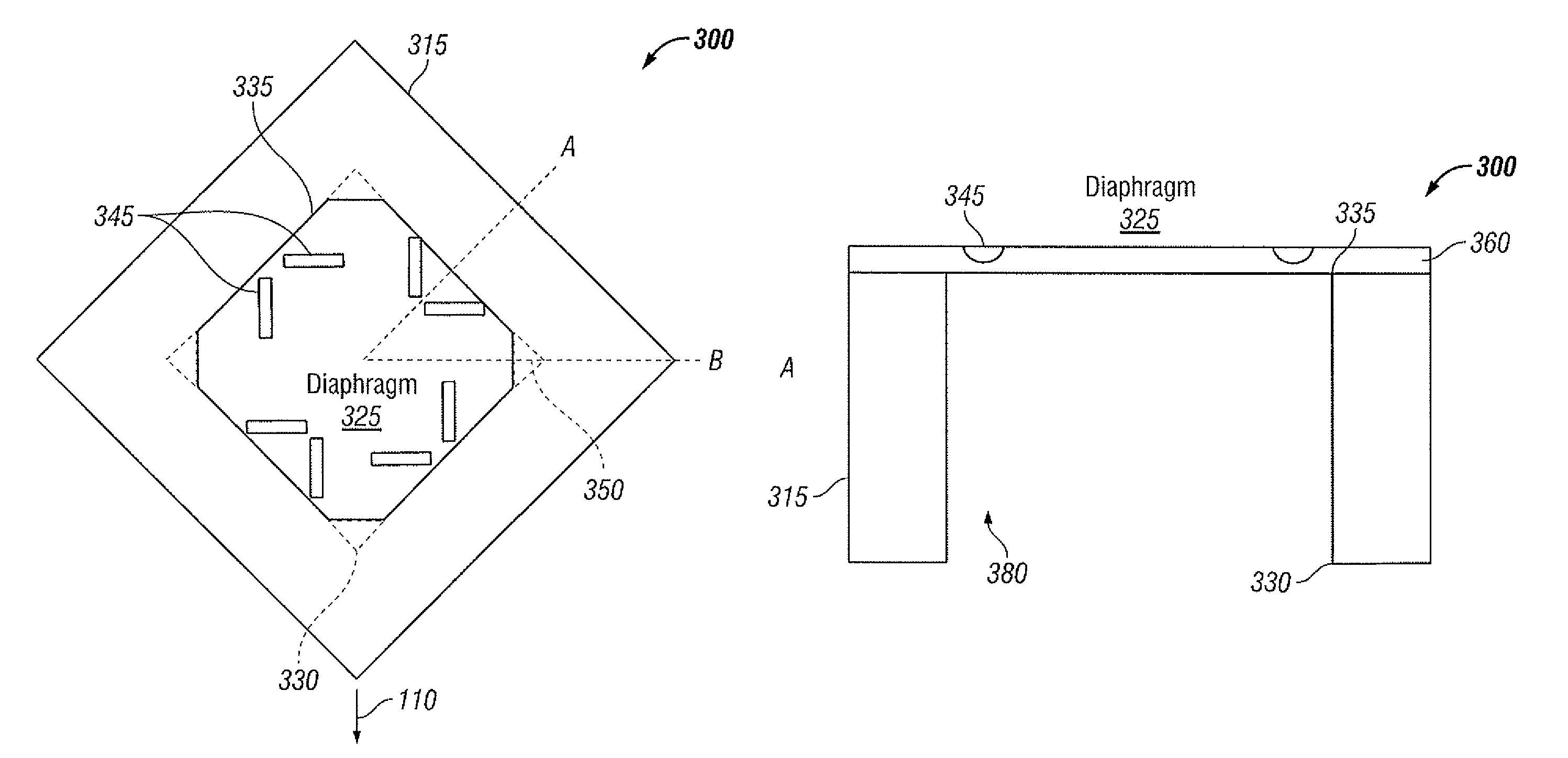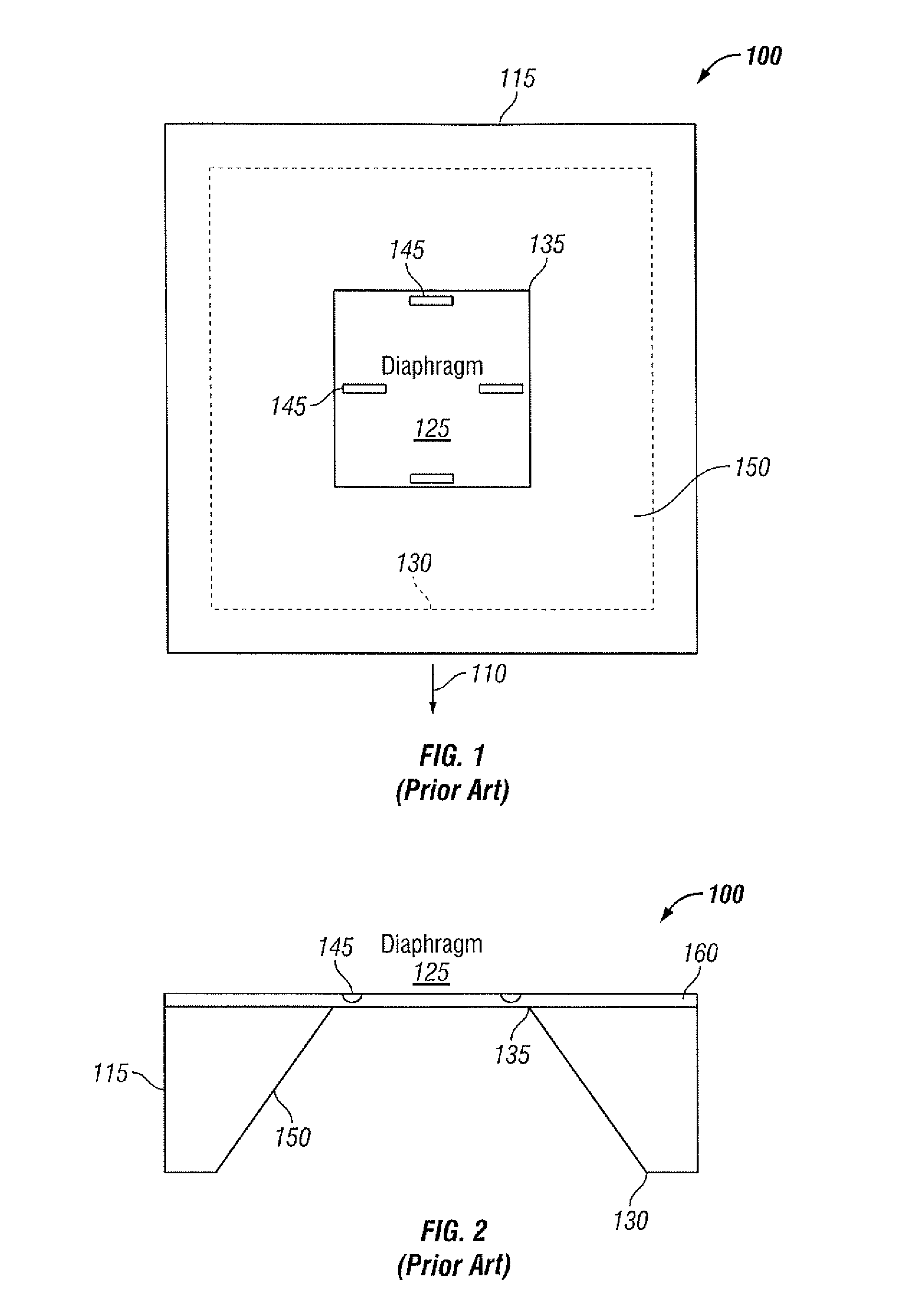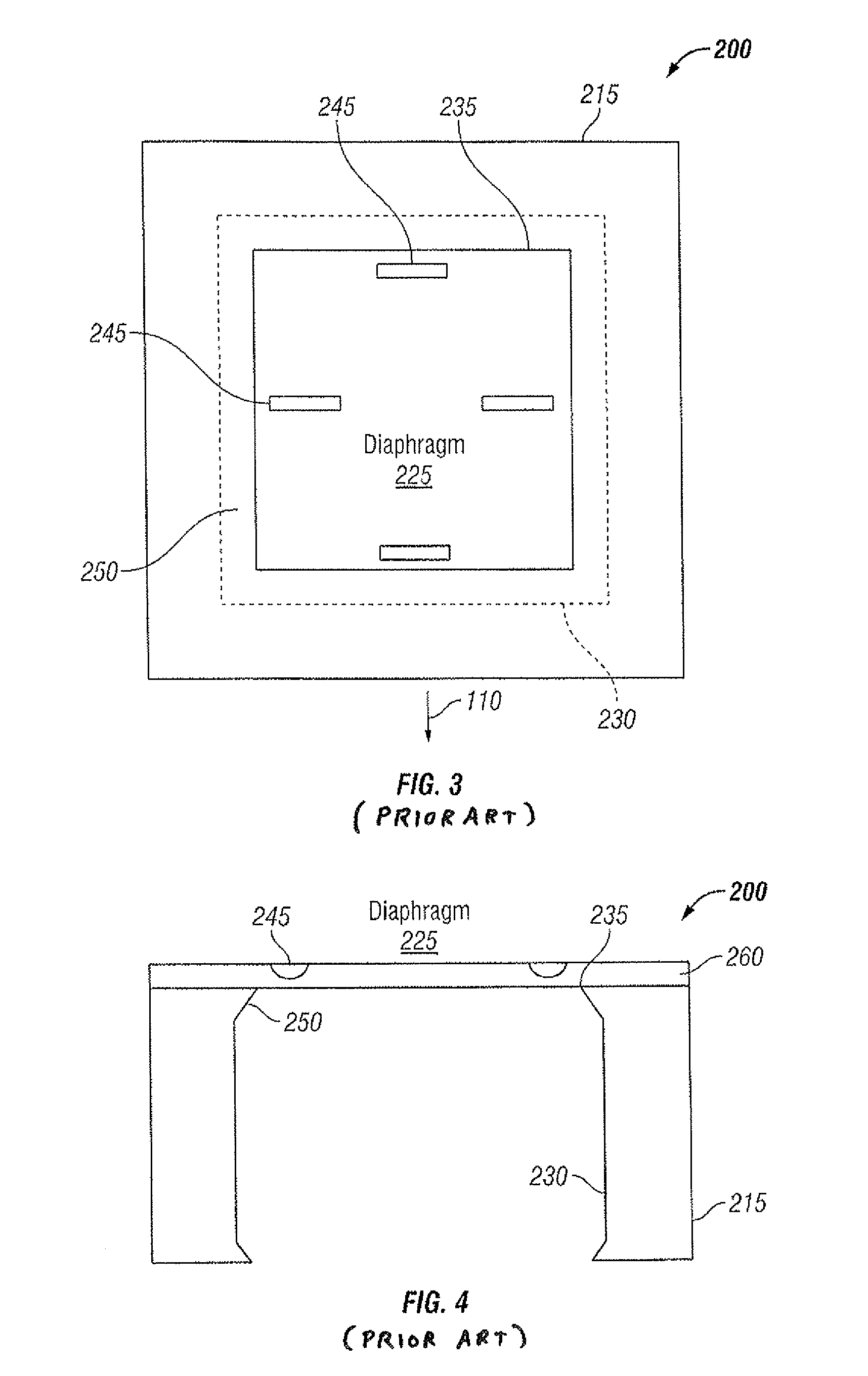Method and system for etching a diaphragm pressure sensor
a diaphragm pressure sensor and etching technology, applied in the field of pressure sensing devices and techniques, can solve the problems of insufficient etch depth control, affecting device performance and manufacturing yield, and unable to produce satisfactory yields for high sensitivity devices, etc., to achieve enhanced diaphragm structure, high strain/stress, and optimized diaphragm thickness and siz
- Summary
- Abstract
- Description
- Claims
- Application Information
AI Technical Summary
Benefits of technology
Problems solved by technology
Method used
Image
Examples
Embodiment Construction
[0021]The particular values and configurations discussed in these non-limiting examples can be varied and are cited merely to illustrate at least one embodiment and are not intended to limit the scope thereof.
[0022]FIG. 5 illustrates a top view of a diaphragm pressure sensor 300 fabricated at an angle utilizing a hybrid anisotropic etching process, in accordance with the disclosed embodiments. The diaphragm pressure sensor 300 can be generally employed in varying sensing application to measure an applied pressure. The pressure sensor 300 includes a diaphragm 325 etched on a substrate 315 (e.g., a silicon wafer with (100) crystallographic orientation) via the hybrid etching process. The hybrid etching process combines a DRIE (Deep Reactive Ion Etching) etching process and a KOH (Potassium Hydroxide) etch finishing process. Note that the substrate 315 may be configured from a material such as, for example, a silicon material. It can be appreciated, of course, that other types of mater...
PUM
 Login to View More
Login to View More Abstract
Description
Claims
Application Information
 Login to View More
Login to View More - R&D
- Intellectual Property
- Life Sciences
- Materials
- Tech Scout
- Unparalleled Data Quality
- Higher Quality Content
- 60% Fewer Hallucinations
Browse by: Latest US Patents, China's latest patents, Technical Efficacy Thesaurus, Application Domain, Technology Topic, Popular Technical Reports.
© 2025 PatSnap. All rights reserved.Legal|Privacy policy|Modern Slavery Act Transparency Statement|Sitemap|About US| Contact US: help@patsnap.com



